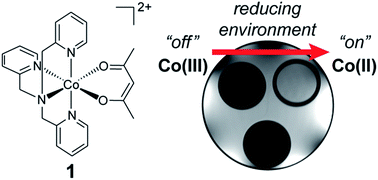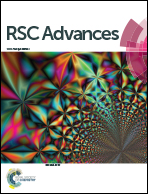Reversible magnetogenic cobalt complexes†
Abstract
Cobalt complexes have been extensively used for their catalytic and solid-state magnetic properties, but the solution-state magnetic properties have not yet been widely exploited. Two versatile cobalt ligand scaffolds were investigated for their magnetic properties, which both demonstrated a diamagnetic to paramagnetic transition upon reduction. Notably, one of these complexes, cobalt tris(2-pyridylmethyl)amine (Co-TPA), was capable of cycling between a stable Co(II) species that could induce longitudinal and transverse relaxation of surrounding water protons, and a stable diamagnetic Co(III) species, exhibiting negligible relaxivity effects. Therefore, we propose Co-TPA as a dynamic redox responsive contrast agent for the magnetic resonance imaging (MRI) of hypoxia.


 Please wait while we load your content...
Please wait while we load your content...